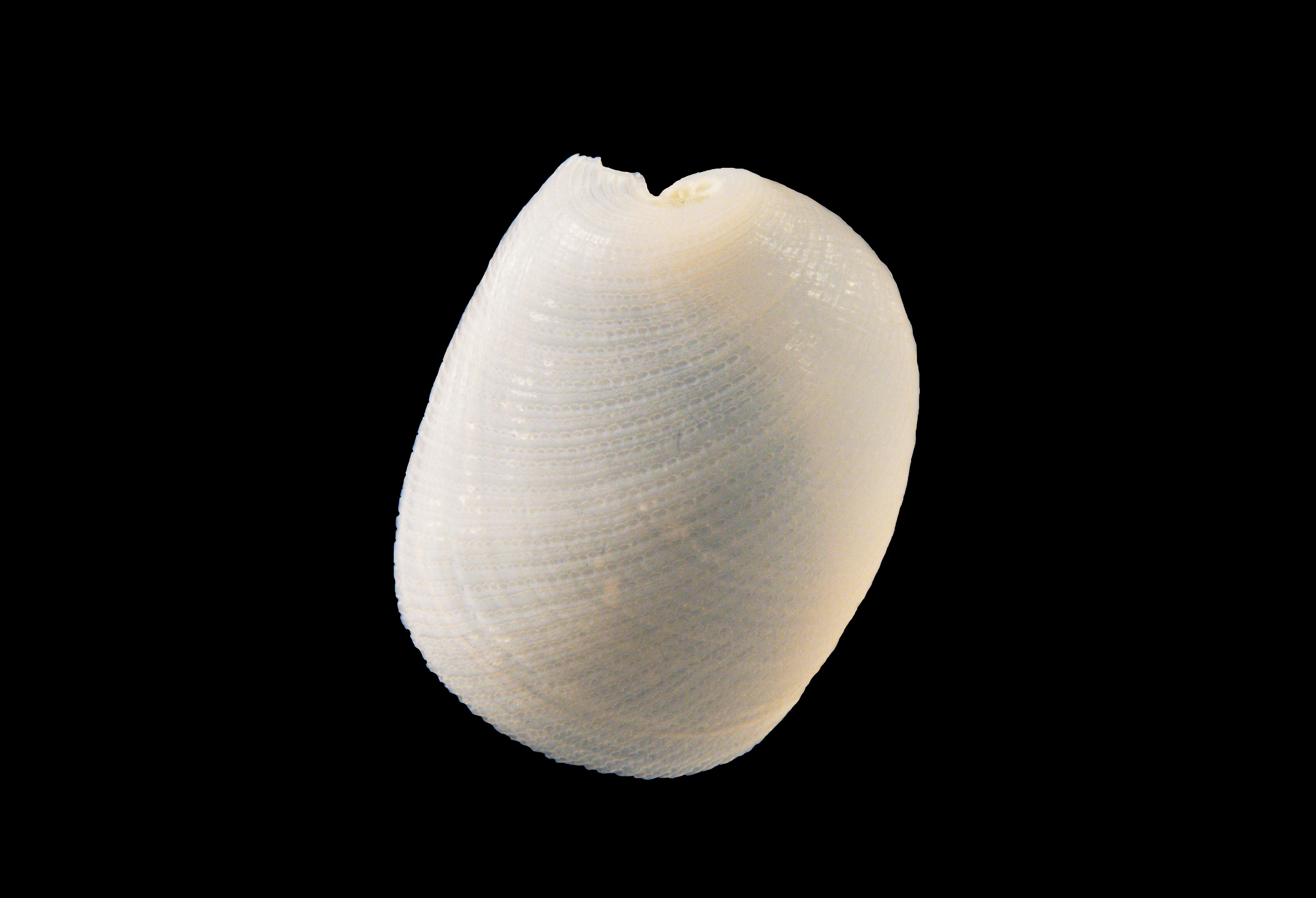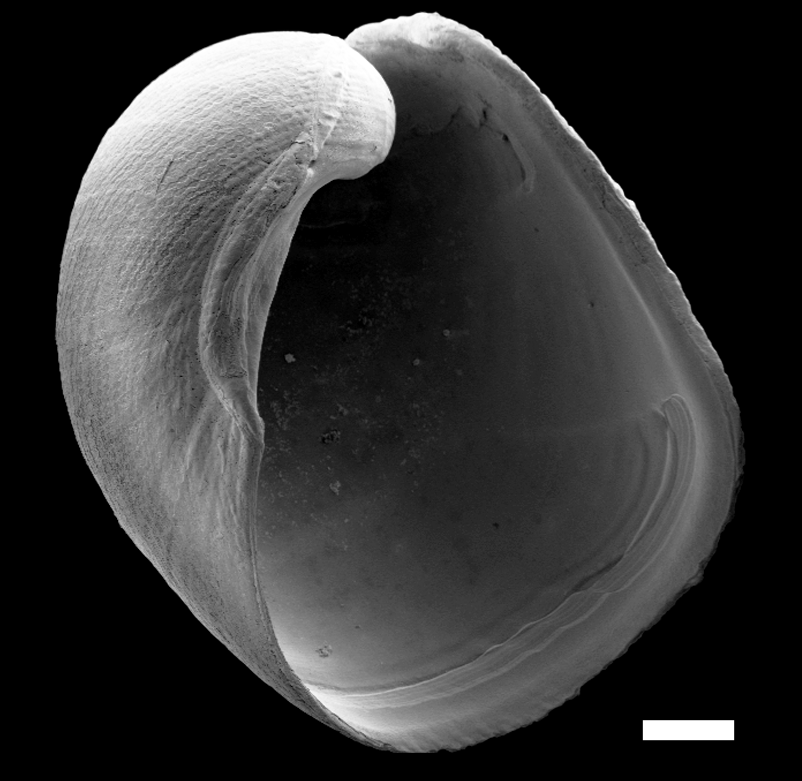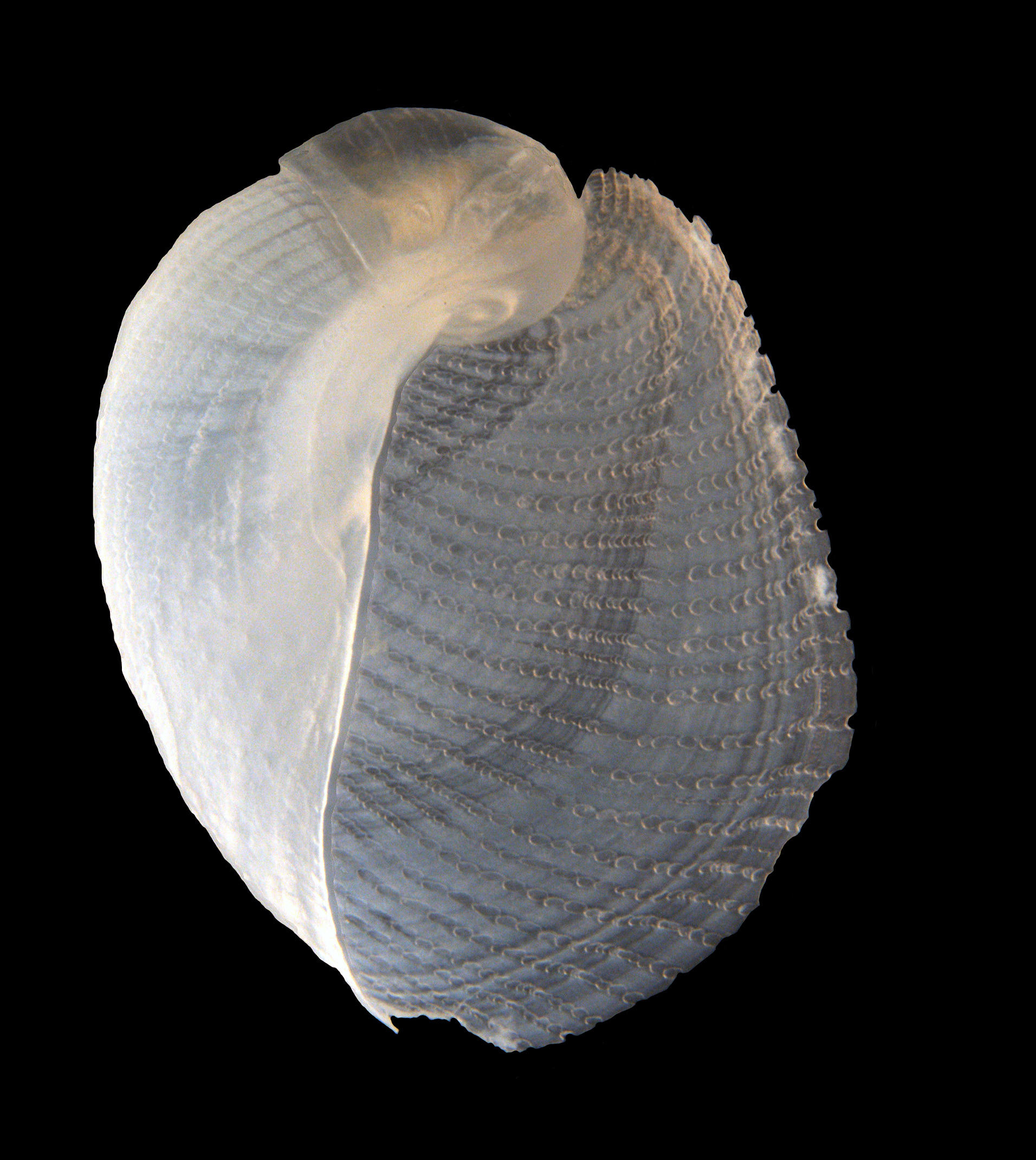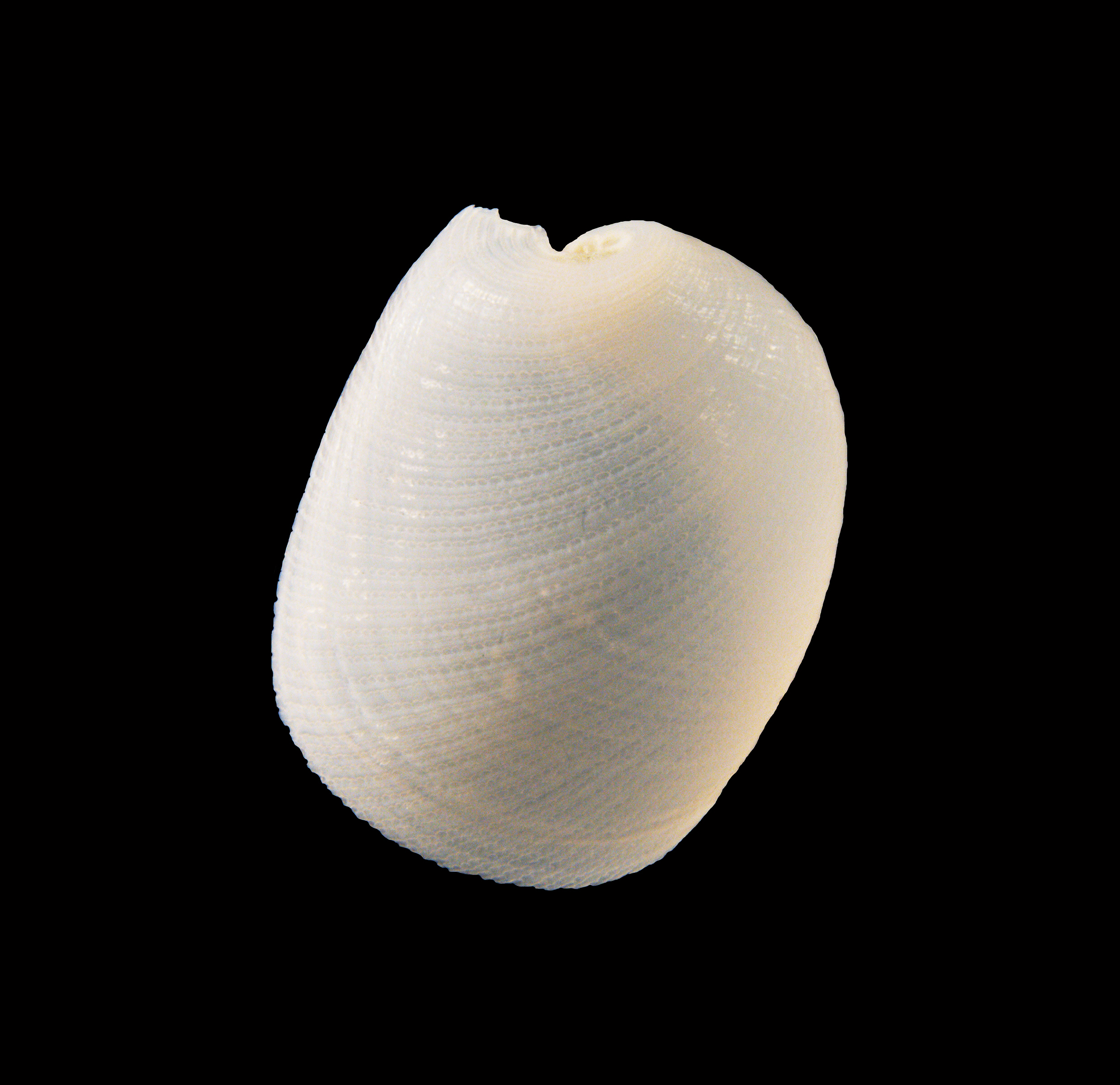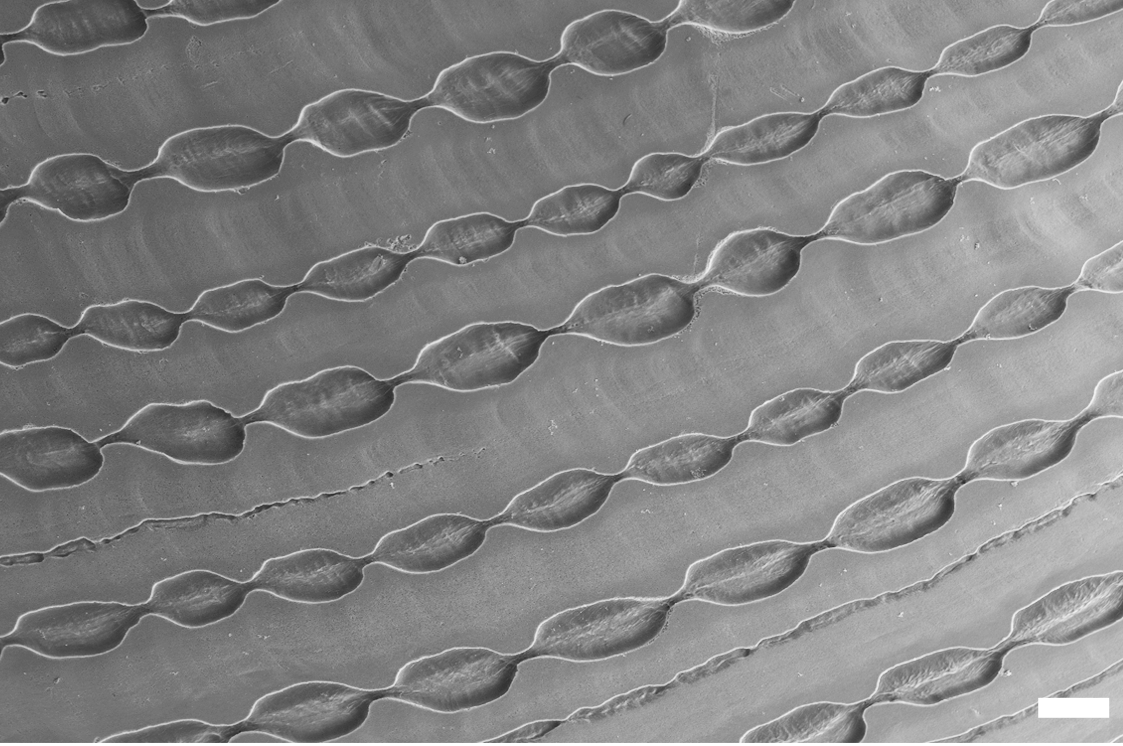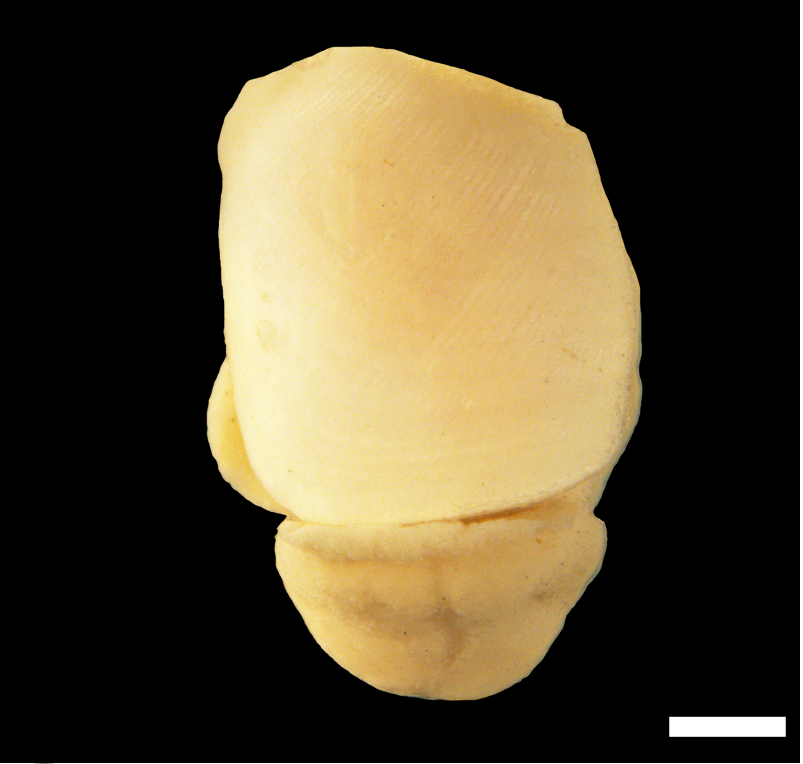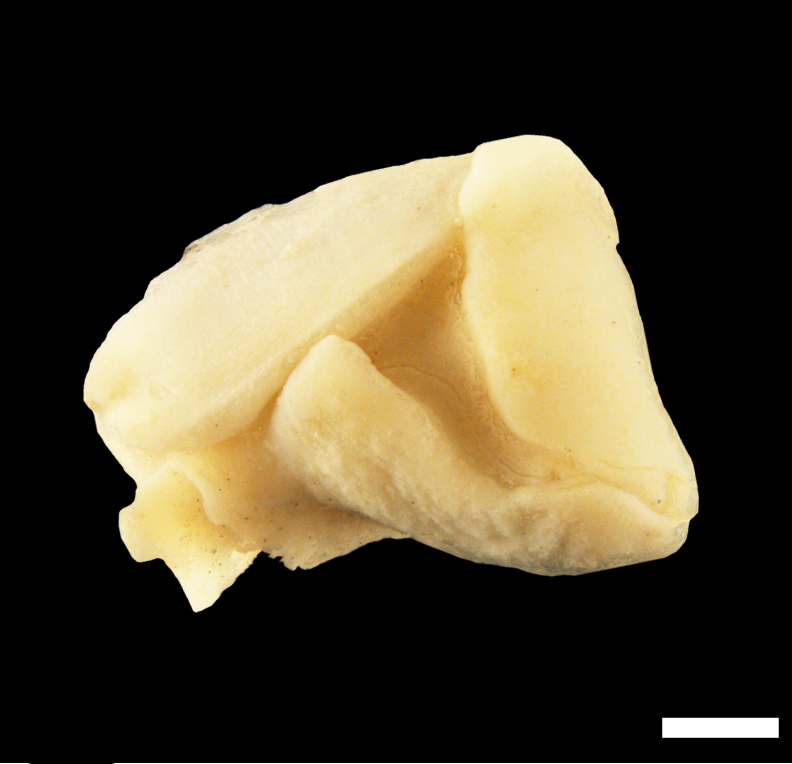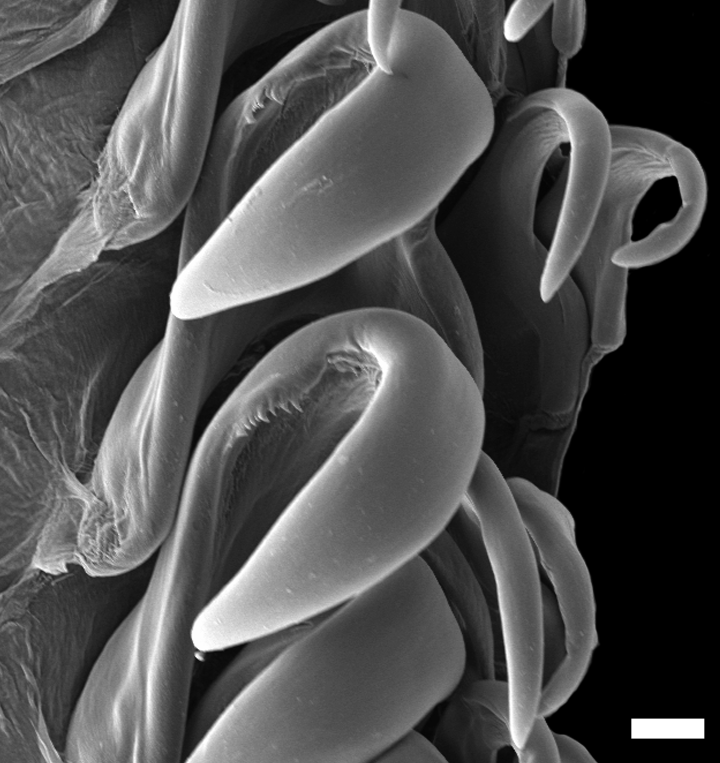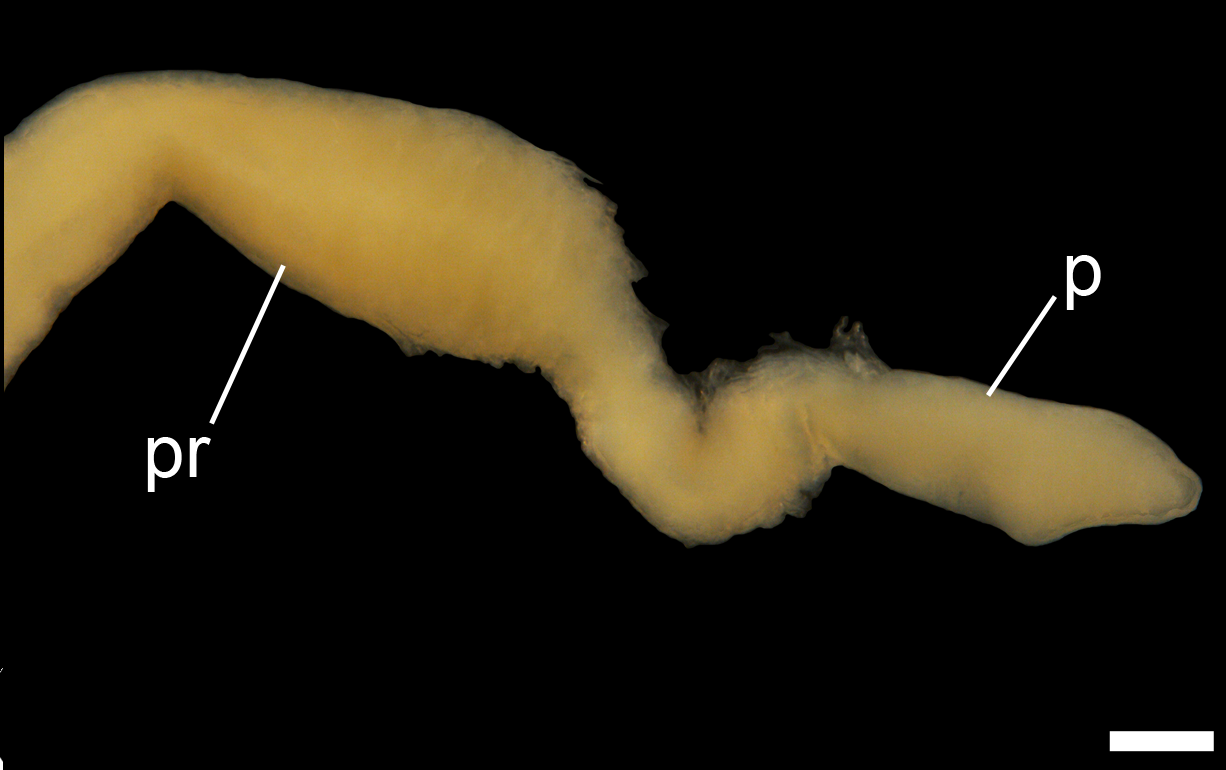Philine quadrata
Shell description
The thick shell is internal and white. The shell is oval-quadrate in shape when viewed from above. The opening is wide and the upper edge is slightly wavy (scalloped). The top of the shell (apex) is blunted and slightly sunken. The shell is not umbilicated. The pattern of the shell’s surface consists of fused pits connected by narrow lines forming chain-like lines. The size of the shell varies between 1.5–7.1 mm.
Animal description
The body is uniformly white, and the head shield is blunted towards the front of the animal and a central groove is present. The tissue covering the shell (mantle) is thick, but the pattern of the shell is still visible through it. There are side extensions of the foot (parapodial lobes).
Anatomy
The radula consists of 12 rows of teeth with two outer lateral teeth and one inner lateral tooth on each side. The central (rachidian) tooth is absent. The outer lateral teeth are curved with rounded tips and a broad base. The inner lateral teeth are curved with flattened tips and a broad base. The salivary glands are slightly longer than the part of the foregut containing the radula (buccal mass). The gizzard is rounded, not surrounded by muscular fibres and does not hold plates. The male reproductive system consists of a short, thick and wrinkly prostate emerging from a tubular penis chamber, which holds a cone-shaped penis papilla.
Ecology
Occurs down to 2355 m on soft bottom, mud, clay, sand, coarse sand, shell sand, rocks, and gravel. Foraminiferans have been found in the gut of this species.
Geographical distribution
This species has an amphi-Atlantic distribution, occurring from New England, USA, eastwards to Greenland and Iceland, the Barents and White Seas. Found down the entire coast of Norway, the Faeroes, British Isles, southwards to the Mediterranean, Azores, Morocco and St. Helena.
References
Ohnheiser LT og Malaquias MAE (2013). Systematic revision of the gastropod family Philinidae (Mollusca: Cephalaspidea) in the northeast Atlantic Ocean with emphasis on the Scandinavian peninsula. Zoological Journal of the Linnean Society 167(2): 273-326. DOI: 10.1111/zoj.12000.
